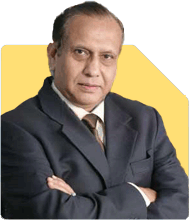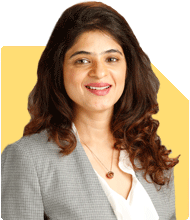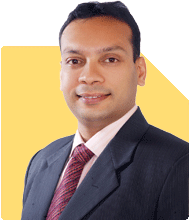Career Coach | Answer |Ask -Follow
Workplace Expert - Answered on Jan 30, 2024

हमें बताएं कि आप अपनी वर्तमान नौकरी क्यों छोड़ना चाहते हैं। यह नौकरी साक्षात्कार में नियोक्ताओं द्वारा पूछा जाने वाला एक बहुत ही सामान्य प्रश्न है। इस प्रश्न का उत्तर देने का सही तरीका क्या है?
1. कैरियर में उन्नति पर प्रकाश डालें: पेशेवर विकास में अपनी रुचि पर जोर दें और कैसे नई स्थिति आपके दीर्घकालिक कैरियर के उद्देश्यों को पूरा करती है, एक दूरदर्शी दृष्टिकोण का प्रदर्शन करती है।
- उदाहरण: "हालांकि मैंने अपनी वर्तमान भूमिका में बहुमूल्य अनुभव प्राप्त किया है, मैं इस नए अवसर को अपने करियर लक्ष्यों के अनुरूप निरंतर वृद्धि और विकास के अवसर के रूप में देखता हूं।"
2. नई नौकरी के सकारात्मक पहलुओं पर जोर दें: यह दिखाएं कि आपको नई भूमिका के लिए क्या आकर्षित करता है, जैसे कंपनी के मूल्य, मिशन या विशिष्ट नौकरी की जिम्मेदारियां। किसी नकारात्मक चीज़ से बचने के बजाय अपनी प्रतिक्रिया को सकारात्मक बदलाव के इर्द-गिर्द रखें।
- उदाहरण: "मैं ऐसी कंपनी से जुड़ने को लेकर उत्साहित हूं जो नवाचार को प्राथमिकता देती है। मेरा मानना है कि मेरे कौशल इस नई भूमिका द्वारा प्रस्तुत चुनौतियों के लिए उपयुक्त हैं।"
3. व्यक्तिगत परिस्थितियों का संदर्भ लें: यदि लागू हो, तो अपने व्यक्तिगत जीवन में बदलाव (जैसे, स्थानांतरण, पारिवारिक परिस्थितियाँ) का उल्लेख करें जो आपको नौकरी खोजने के लिए प्रेरित करते हैं, इस बात पर जोर देते हुए कि इसका आपकी वर्तमान नौकरी से असंतोष से कोई संबंध नहीं है।
- उदाहरण: "मेरी पारिवारिक स्थिति में हाल के बदलावों के कारण, मैं एक ऐसे पद की तलाश कर रहा हूं जो मेरी पेशेवर और व्यक्तिगत प्रतिबद्धताओं के बीच बेहतर संतुलन प्रदान करे। मेरा मानना है कि यह नया अवसर वह संतुलन प्रदान करता है।"
4. नकारात्मकता से दूर रहें: वर्तमान या पिछले नियोक्ताओं, सहकर्मियों या कंपनी संस्कृति की आलोचना करने से बचें। स्वयं को अनुकूल रूप में प्रस्तुत करने के लिए अपनी टिप्पणियाँ सकारात्मक रखें।
- उदाहरण: प्रबंधन के प्रति असंतोष व्यक्त करने के बजाय, कुछ ऐसा कहें, "मैं एक ऐसे कार्य वातावरण की तलाश में हूं जो मेरे सहयोगात्मक और टीम-उन्मुख दृष्टिकोण के साथ अधिक मेल खाता हो।"
मुख्य बात यह है कि आपकी वर्तमान या पिछली भूमिकाओं के किसी भी नकारात्मक पहलू पर ध्यान दिए बिना, नए अवसर के प्रति आपके उत्साह को व्यक्त किया जाए और यह आपके कैरियर के लक्ष्यों के साथ कैसे मेल खाता है।
आप नीचे ऐसेही प्रश्न और उत्तर देखना पसंद कर सकते हैं
Amit Bansal | Answer |Ask -Follow
Answered on Jun 18, 2010
Virender Kapoor | Answer |Ask -Follow
Self-improvement Expert - Answered on Jun 27, 2023
Ashwini Dasgupta | Answer |Ask -Follow
Personality Development Expert, Career Coach - Answered on Jul 31, 2023
Krishna Kumar | Answer |Ask -Follow
Workplace Expert - Answered on Mar 09, 2024
Krishna Kumar | Answer |Ask -Follow
Workplace Expert - Answered on Jan 27, 2025
Dr Shyam Jamalabad |106 Answers |Ask -Follow
Dentist - Answered on Dec 05, 2025
Dr Dipankar Dutta |1836 Answers |Ask -Follow
Tech Careers and Skill Development Expert - Answered on Dec 05, 2025
Ulhas Joshi |280 Answers |Ask -Follow
Mutual Fund Expert - Answered on Dec 05, 2025
Dr Dipankar Dutta |1836 Answers |Ask -Follow
Tech Careers and Skill Development Expert - Answered on Dec 04, 2025
Ravi Mittal |676 Answers |Ask -Follow
Dating, Relationships Expert - Answered on Dec 04, 2025
Anu Krishna |1745 Answers |Ask -Follow
Relationships Expert, Mind Coach - Answered on Dec 04, 2025
Anu Krishna |1745 Answers |Ask -Follow
Relationships Expert, Mind Coach - Answered on Dec 04, 2025
Mayank Chandel |2562 Answers |Ask -Follow
IIT-JEE, NEET-UG, SAT, CLAT, CA, CS Exam Expert - Answered on Dec 04, 2025
Mayank Chandel |2562 Answers |Ask -Follow
IIT-JEE, NEET-UG, SAT, CLAT, CA, CS Exam Expert - Answered on Dec 04, 2025
Mayank Chandel |2562 Answers |Ask -Follow
IIT-JEE, NEET-UG, SAT, CLAT, CA, CS Exam Expert - Answered on Dec 04, 2025






























